Healthy Expression of Anger

You can personalize the Healthy Expression of Anger resource by downloading it HERE, and adding your own responses, or continue to view it below.
Anger is a natural human emotion, and like any emotion, can give us information about our needs or things that are happening in our environment. It is not wrong or “bad” to feel anger, rather it is what we do with that anger (our behavior) that can be constructive or destructive. Anger is often experienced when there is something unfair or unjust happening to us, someone that we care about, or a social group that we belong to. It might also be experienced when we are blocked from doing something important to us. Experiencing anger can lead to taking protective action for ourselves, such as fight or flight from threats, or setting strong boundaries if we are being mistreated.
What is Anger?



Understanding Anger
In Cognitive Behavioral Therapy (CBT), the “cognitive triangle” can provide a helpful way of breaking down our experiences into smaller parts, giving us a better understanding of what situations, thoughts, and behaviors are interconnected with our emotions.
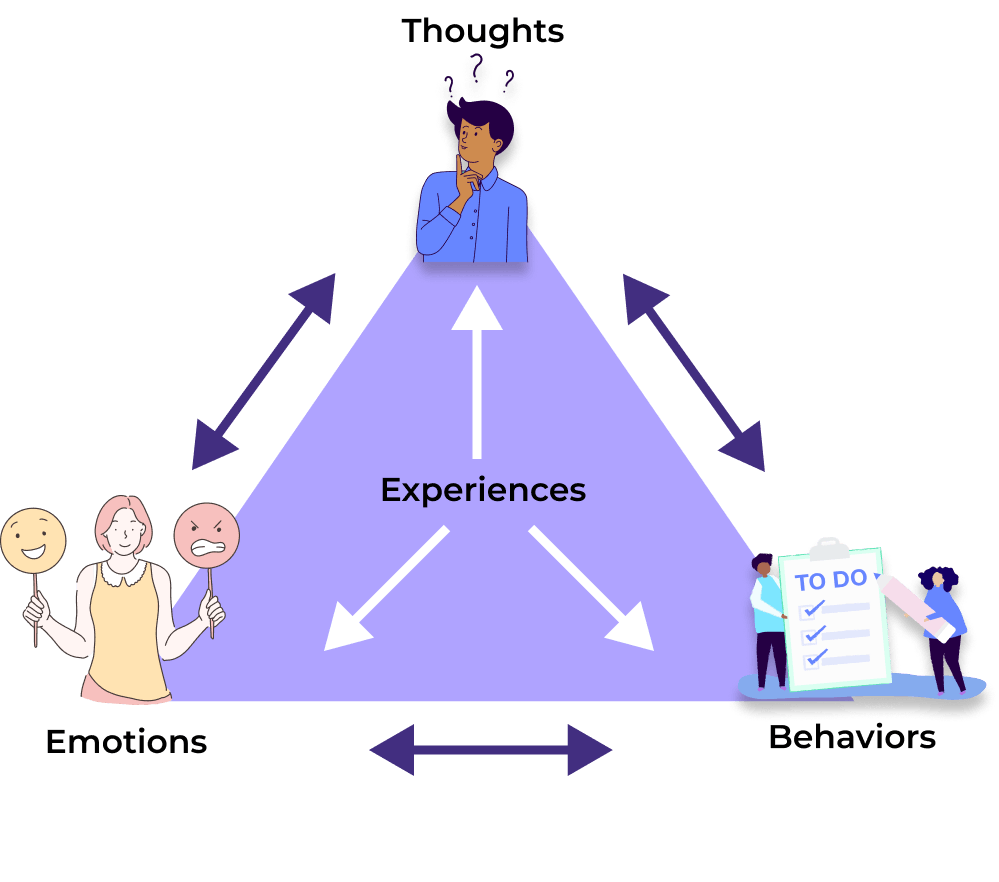
With anger, we might notice that when something happens, we have an automatic thought. Then we experience emotions like fear, irritation, frustration, hostility, or rage. Finally, we may act on that emotion through a “behavioral response”, like attacking or yelling at someone. For example:
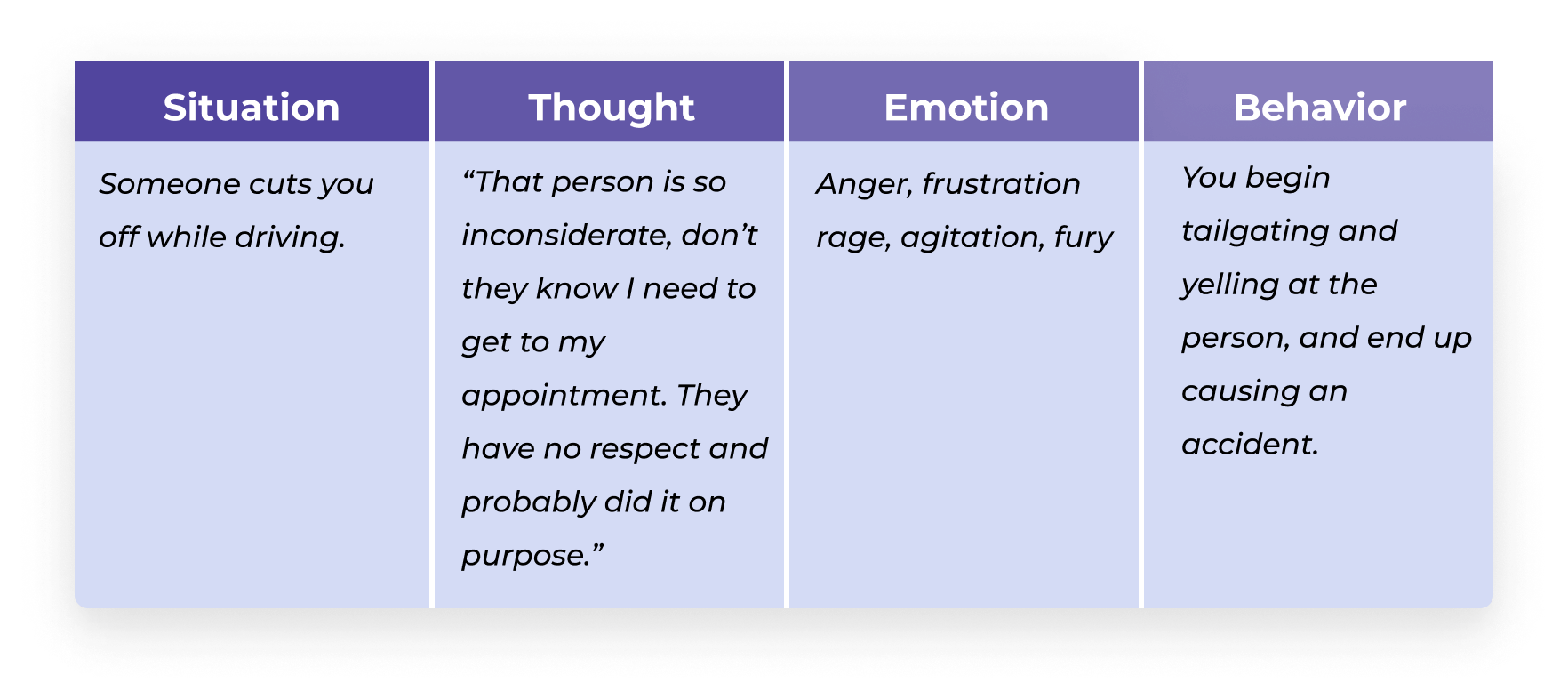
Expressing vs. Suppressing Anger
Healthy expression:
- assertive communication
- expressing your feelings and needs without criticizing the other person’s character
- having empathy by trying to understand the other person’s experience and feelings
- using “I-statements”; for example, “I feel ________ when you ________, so I would appreciate it if you could _________.”
Unhealthy Expression:
- physical violence
- aggressive or passive aggressive communication
- intimidating others with words or behavior
- vindictive behavior or "getting revenge"
- criticizing, demeaning, or bullying others
- cynical/hostile actions, with intent hurt the other person
- physical harm of self or others
Healthy Suppression:
- outward expression; the energy of the emotion is converted or channeled into constructive behavior
- constructive behaviors: focusing on things within our control (rather than controlling others), which can motivate us to do something to make the anger more bearable
- short term examples: physical exercise, deep breathing, getting a task done, setting a boundary
- long term examples: finding a meaningful outlet (e.g. choosing, a career, vocation, or hobby to help make change or memorialize an event; volunteer work; working towards personal growth/change
Unhealthy Suppression:
- directing the anger toward ourselves
- outward expression is “not allowed”
- may include self-blame, self-harm, or shame
Steps to Healthy Expression of Anger
Learning to recognize when we are feeling anger and making the decision to express that anger in a constructive or healthy way may take time. Like learning any new skill, especially if it’s a new concept or you’ve never seen others do it, start small, practice, have compassion for and patience with yourself, and expect to make mistakes along the way.
- Develop awareness – of your triggers, body signals, emotional intensity, thoughts, behaviors, and underlying needs. This can be done through the use of the Logging Anger resource, and through completing the reflections below
- Practice skills on your own – practicing some of the following skills when you aren’t angry can help you prepare to express anger in a healthier way: Assertive Communication; Coping Skills; Communicating Boundaries; Deep Breathing; Grounding Techniques; “I” Statements
- Reflect – think about recent situations with non-judgmental awareness, and ask yourself: “what went well and what could I have done differently?”. It can be helpful to write your answers in a notebook or notes app to keep a record of your reflections
- Experiment – set an intention and practice healthy expression of anger, starting with situations that aren’t as intense; you can also ask a trusted friend or therapist to role play a situation where you’d usually get angry
- Reflect again – think about your experiments, and ask yourself: “what could I have done differently to meet my needs while respecting the other person’s?”
- Keep practicing - implement change(s) from your experiments, and consciously acknowledge any successes or growth
Reflection: Understanding Our Anger
When we get curious about how we experience anger in our bodies, how we react to anger, and our beliefs about anger, we have the opportunity to express the emotion more constructively. Use the following reflections below to build awareness around your own experience of anger. To access an editable version of this resource and add your responses, you can download the PDF version HERE.
How do you know you’re starting to get angry?




How do you normally feel when you’re angry?
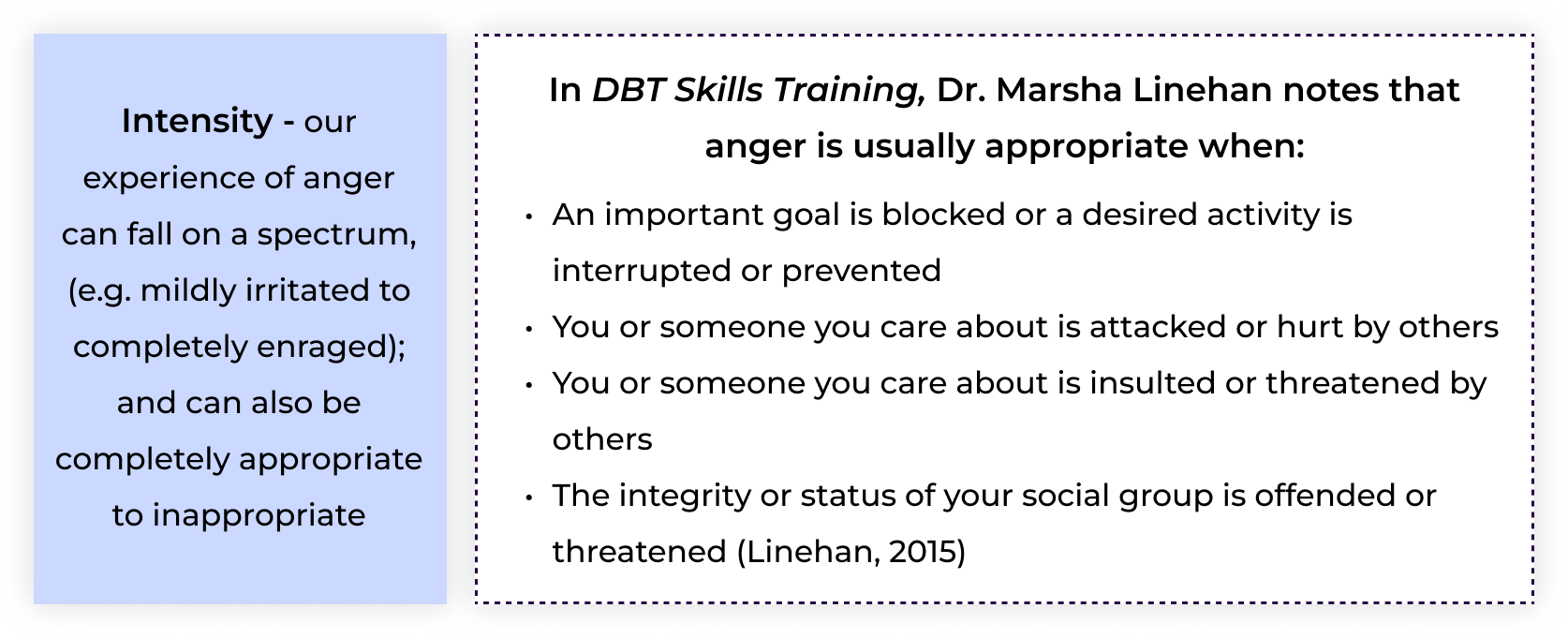

How do you normally behave when you’re angry?
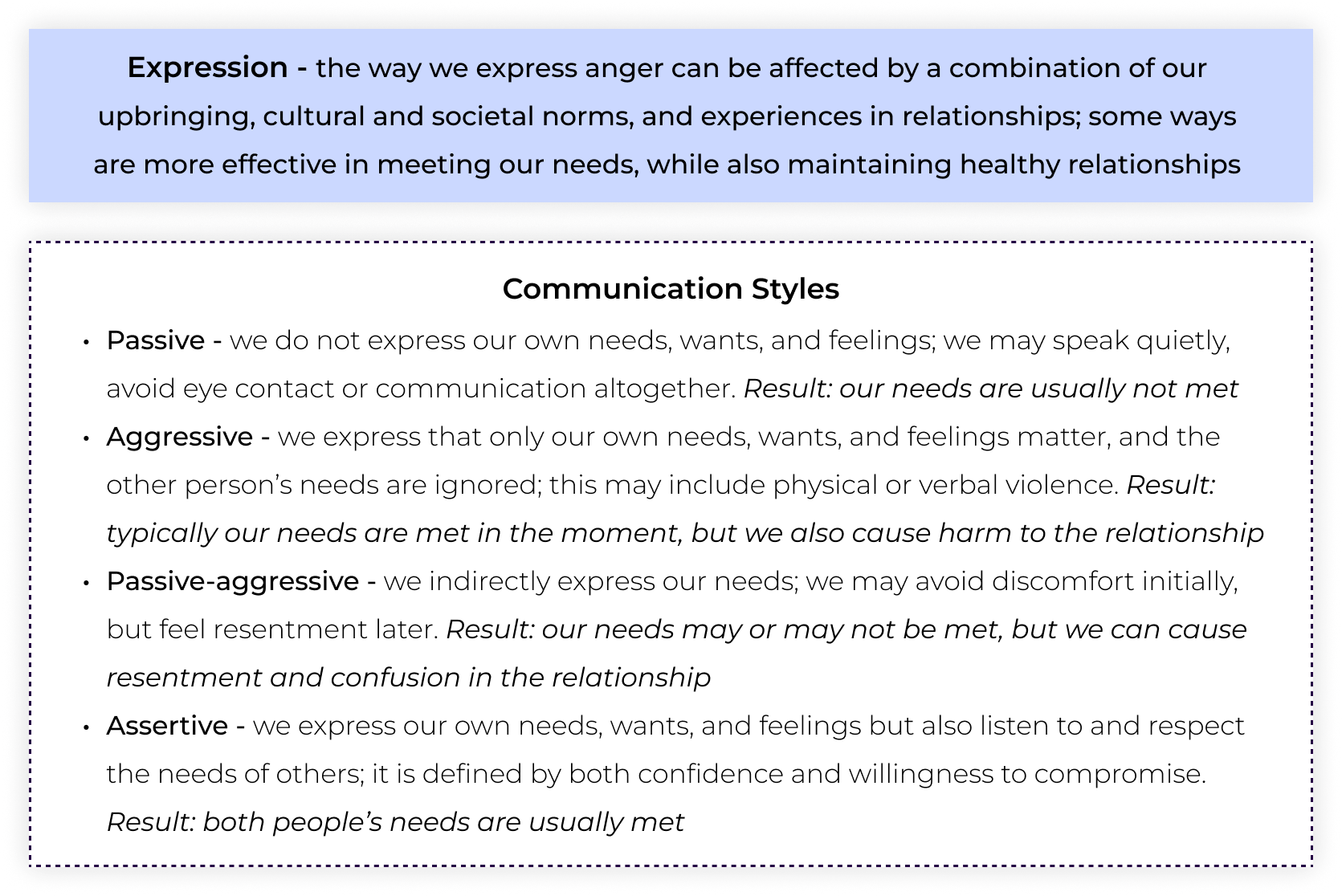

What are your thoughts and beliefs about anger?
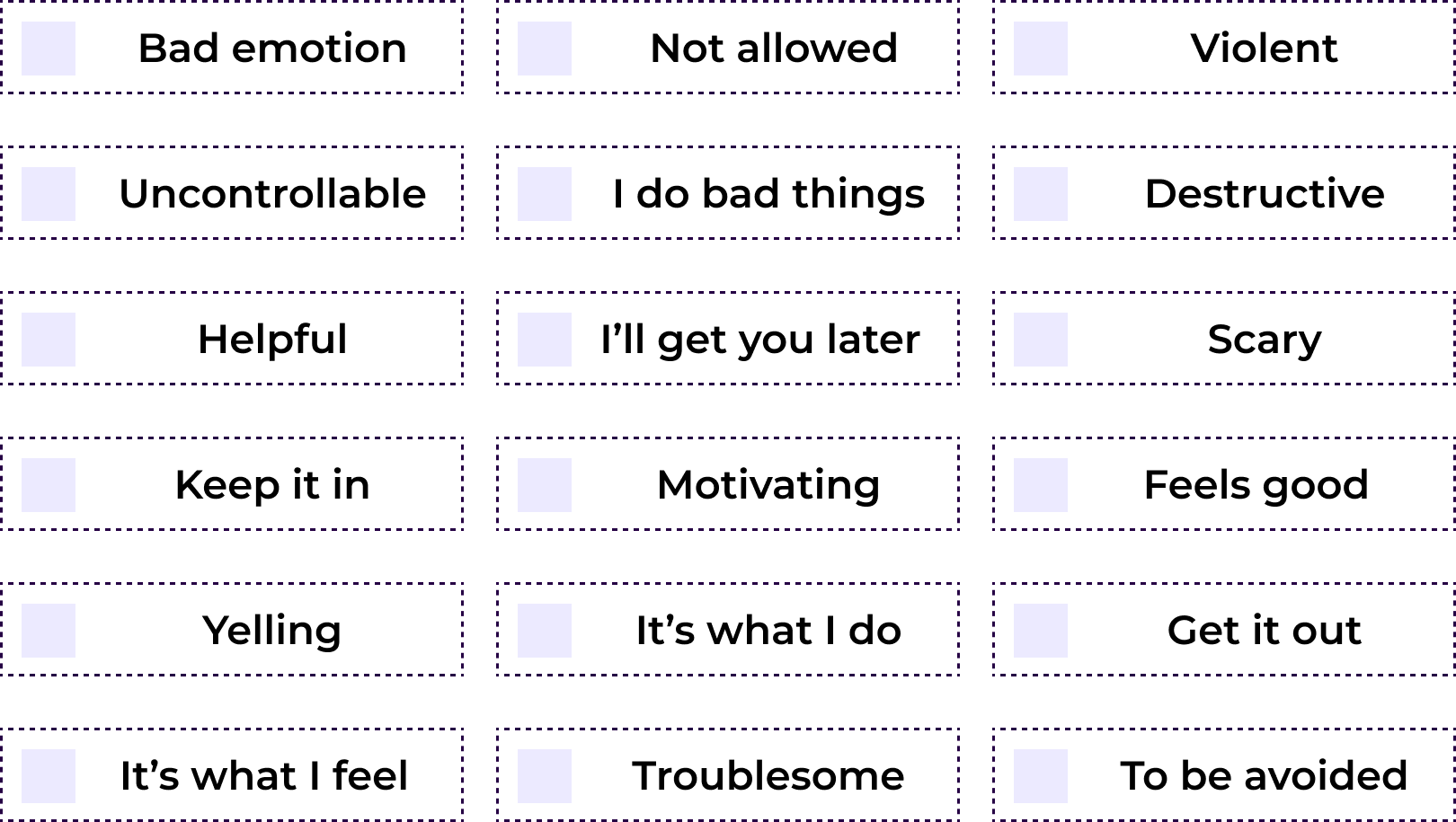
Now that you’ve reflected on your own experiences and beliefs around anger reflect on what stood out to you. You may also reflect on areas that are going well, areas that need improvement, and any motivations for change.
Additional Resources
Call 911 if you’re having a
mental health emergency
Text Home to 741-741 if you're in emotional
distress and need immediate support
Call or text 988 Suicide &
Crisis Lifeline. Chat service
is available at 988lifeline.org.